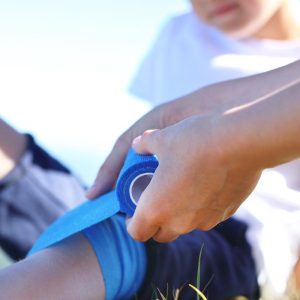Relief for Osgood-Schlatter How Physiotherapy Can Ease the Pain
Osgood-Schlatter disease is a common condition that affects active children and adolescents, often causing pain and discomfort around the knee area. It’s heart-wrenching to see your child struggle with pain while pursuing their passion for sports or simply enjoying everyday activities.
We’ll discuss the pain points associated with Osgood-Schlatter, why conventional treatments may fall short, and how physiotherapy offers effective solutions to alleviate the discomfort and help your child regain their mobility.
Understanding the Pain Points:
- Knee Pain: The hallmark symptom of Osgood-Schlatter disease is pain and tenderness just below the knee, particularly during activities that involve jumping, running, or climbing stairs. For this reason it is often referred to as “Jumper’s Knee”
- Swelling: The area around the knee may become swollen, making it uncomfortable to wear tight-fitting clothing or kneeling.
- Reduced Activity: Children with Osgood-Schlatter may have to limit their participation in sports and physical activities due to the pain, which can lead to frustration and a sense of isolation.
Why Traditional Treatments Fail:
- Rest Alone: While rest can provide temporary relief, it often fails to address the underlying issues that trigger Osgood-Schlatter pain. Complete inactivity may not be a practical solution for active kids.
- Pain Medications: Pain medications may mask the symptoms but do not promote healing or address the root cause of the condition. As with all medications, there may be side effects especially with prolong use.
- Inadequate Rehabilitation: Focusing solely on symptom management neglects the importance of rehabilitation and strengthening exercises, which are essential for long-term relief.
Effective Physio Solutions That Work:
- Individualised Assessment: Our physiotherapist Juergen Toelle will conduct a thorough evaluation to understand your child’s unique condition, pain level, and activity goals.
- Customised Exercise Plans: Physiotherapy involves the development of personalised exercise regimens to strengthen the muscles around the knee, improve flexibility, and address biomechanical issues that may be contributing to the knee pain.
- Pain Management Techniques: Juergen uses various techniques, such as ice therapy and manual therapy, to manage pain and reduce swelling in the affected area.
- Education: Physiotherapy includes educating both the child and their parents about the condition, proper techniques, and strategies to prevent exacerbation.
- Gradual Return to Activity: Rather than complete inactivity, physiotherapy encourages a gradual return to sports and activities in a controlled and pain-managed manner.
- Monitoring and Adjustments: It’s important to continuously monitor progress and make adjustments to the treatment plan as needed, ensuring that your child’s needs are met throughout their recovery journey.
Osgood-Schlatter disease can be a painful hurdle in a young person’s life, but it doesn’t have to be a long-lasting one. Traditional treatments may fall short, but physiotherapy offers a comprehensive and effective solution that focuses on addressing the root causes of the condition. Through individualised assessments, customised exercise plans, and pain management techniques, our physiotherapist can help your child regain their mobility, confidence, and the ability to enjoy the activities they love. If your child is suffering from Osgood-Schlatter, consider consulting our physiotherapist to embark on a path towards relief and recovery.


